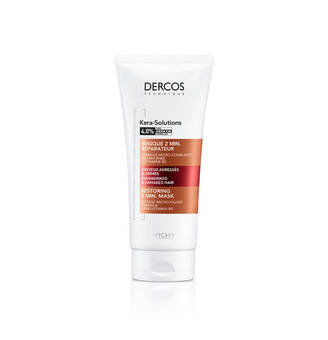- FREE Delivery on Orders Over £25
- Order by 2pm for Next Day Delivery
- UK Registered Pharmacy: 9011378
Refine your search
Current Selection
Categories
Brands
Hair Loss Shampoo
Overview
Hair loss and hair thinning can be a very natural part of ageing and by age 60 approximately 60% of men and 80% of women suffer some degree of noticeable hair loss.
Though most hair loss is natural and not a health concern, it can still be very distressing for those affected. There are effective treatments to slow hair loss and stimulate hair growth such as shampoos and creams that can help strengthen hair as well as provide a good environment for hair growth.
There are cases where hair loss is a concern, and you should talk to a GP if you have any of the following symptoms:
- Very sudden hair loss
- Developing bald patches
- Losing hair in clumps
- Head is itchy and has a burning sensation
While most hair loss is due to ageing, male pattern baldness, or female pattern baldness, other types of hair loss can be caused by a number of factors. Hair loss can be caused by:
- Illness
- Stress
- Cancer treatment
- Weight loss
- Iron deficiency
- Prescription medication
At Rightdose Pharmacy we supply a range of shampoos and treatments to help with natural hair loss that can either be used alone or in conjunction with prescription hair loss treatments. These are designed to help strengthen existing hair as well as provide a healthy environment for hair growth.
Causes
There are several factors that can cause hair loss. The most common is genetic. Since male pattern baldness is hereditary, and is the most common form of alopecia, this accounts for the main factor in hair loss.
Normally, most people lost 50 to 100 hairs on a daily basis, as a natural ‘shedding’ process. However, new hairs also grow that maintain the balance and prevent noticeable thinning of scalp hair. When this normal cycle of hair-fall and growth is broken or the hair follicle is damaged, hair loss occurs.
Understanding the exact cause of hair loss may be difficult because it is so diverse and may range from simple or temporary reasons to complex health conditions. However, it is normally associated with one or more of the factors specified below:
Hair Loss Causes
Hereditary A hereditary condition called male-pattern baldness or female-pattern baldness is the most common cause of hair loss. It gradually occurs in a predictable patterns – a fade-out hairline and bald spot in men and thinning of the hair in women. It also influences the age at which one will start losing hair, the rate of hair loss, and the size of the baldness in men.
Hormonal Temporary hair loss can also be caused by changes and imbalances in hormones during pregnancy, childbirth, or menopause. As thyroid problems involve hormone levels, it can also be a cause of hair loss. This is often reversible.
Medical conditions When the hair follicles are attacked by the immune system of the body, a type of sudden hair loss called alopecia areata occurs that makes bald patches on the skin. Permanent hair loss can be caused by skin disorders that cause scarring alopecia, such as sarcoidosis, lichen planus, etc. Ringworm infections can also result in hair loss, but hair usually come back once the infections are treated.
Treatments
There are several different types of hair loss, which are known generally as Alopecia. However, there can be different types of alopecia and different causes and symptoms of each type. The most common type of hair loss is male-pattern baldness, and it it this type of hair loss that is commonly treated with treatments such as Regaine and Propecia (Finasteride).
Listed below, are some of the most common types of hair loss
male- and female-pattern baldness Male-pattern baldness is the most common type of hair loss. It affects around half of all men by the time they turn 50 years of age. It can often start in the late twenties or early thirties, whilst most men have some degree of hair loss by their late thirties.Male-pattern baldness will generally follow a pattern of a receding hairline, followed by thinning of the hair on the crown and temples. This can then leave a horseshoe shape around the back and sides of the head. This can sometimes progress to complete baldness.Male-pattern baldness is linked to your genes, and so if their is baldness in the family, you are likely to also have male-pattern baldness at some stage.The condition can sometimes affect women (female-pattern baldness), which is generally characterised by thinning hair on the top of the head.Treatments for male-pattern baldness include minoxidil (Regaine), and Finasteride (Propecia). Propecia is for use only in men, while minoxidil can be used for men and women. See Regain For Women.
alopecia areata
scarring alopecia
anagen effluvium
telogen effluvium
Symptoms
Hair Loss Treatments
Treatment for hair loss may involve one or more of the following treatments:
Medication – such as Propecia (Finasteride) >> You can get a doctor assessment to buy Finasteride ( or Propecia) from Simple Online Pharmacy
Minoxidil: (Regaine Foam) This is an approved medicine to treat hair loss for both men and women. By applying it to the affected area (scalp), it can stimulate the growth of hairs and prevent them from getting thinner. Regaine for women comes in a 2% formula, while Regaine Foam for Men Extra Strength, is in a 5% formula.
Corticosteroid: Hair loss caused by inflammation in the body may be treated by a doctor injecting a corticosteroid
Procedures
Hair transplantation: This surgical treatment for hair loss is primarily used for men in which individual hair follicles from a body part that has good hair growth is transplanted to the bald part.
Scalp reduction: It surgically involves removal of scalp parts that are affected.
Laser Surgery : This involves treatment of the hair follicles with laser treatment, to help regrow the hair. This can only be done to live follicles, and not ones that are already dead.
Scalp expansion: This is a fairly complex surgical procedure, in which devices are inserted under the scalp to stretch the skin and also help reduce balding in hair-bearing areas.
FAQ
There are some common myths about hair loss, some which have some basis in fact, and others which are just a little ridiculous! To clarify some of the common myths and misconceptions about hair loss, we have compiled a list of the ones we hear most often.
Pluck One Grey Hair And Two Grow Back – This hair loss myth has floated around for the longest time. However, it is not true that if you pluck a grey hair, two will grow back!
Standing On Your Head Makes Your Hair Grow – We told you some are a little ridiculous! Despite this being a commonly heard myth, we have confidence that you have never spent long periods on your head in the hope of some hair growth! The myth is routed in the false belief that blood flow to the head will help hair growth. However hair loss is not a blood flow problem, but generally linked to sensitivity to dihydrotestosterone.
There’s No Cure For Baldness – From the incredibly optimistic, to the ultra pessimistic. While there is no “miracle cure” that is going to work for everyone, and bring back your hair to it’s most lush, there are certainly many successful treatments. Laser therapy and hair transplant have the highest success rate, although are on the expensive end of treatment. Drugs like Propecia is a successful treatment of hair loss, and other shampoos and lotions (such as Regaine) can also help stop or reverse hair growth in milder cases of hair loss.
Hair gel and hairspray can cause hair loss – Nop! There is no evidence to suggest they can cause balding. Also in this category of myth, over shampooing, or washing do not cause hair loss either. However, the grain of truth in the myths are that over-mechanical utilisation of hair, can weaken it. So things like using curling irons, or constantly pulling at your hair, can lead to acceleration of existing hair loss.
Hair loss is from your mum’s side of the gene pool – While the primary baldness gene is on the X chromosome (the one men inherit from their mothers), research suggests that men who have a bald father are more likely to develop male pattern baldness than those who don’t.
Higher Testosterone Linked To Hair Loss – The inherited problem is a sensitivity to DHT (dihydrotestosterone). It is this that can cause hair loss in men and some women. However taking synthetic testosterone can accelerate hair loss in men.
Hats Cause Baldness – Nop! They Don’t! So whether you wear a baseball cap, or a bowler hat, you can dig it out of the cupboard again.
I Can Grow Back Dead Hair Follicles – Unfortunately not. Once they’re gone, they’re gone. Medication like Propecia, or laser therapy, can help hair follicles become thicker and healthier, but the only option for regrowth is a hair transplant.





